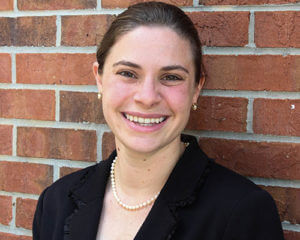September 18, 2020
In response to the coronavirus pandemic, the St. Mary’s University community has adapted – faculty stepping up to deliver quality education to students from a distance.

Amanda Hill, Ph.D., Assistant Professor of Communication Studies, shared takeaways from her recent classes in a Q&A. Hill joined St. Mary’s in 2018. She specializes in Digital Media and Digital Humanities. Her courses include Fundamentals of Oral Communication, Seminar in Communication Studies: Social Media, and Graphic Design.
Q: What was your approach in switching to online learning in a short period of time?
A: I had a lot of privilege going into the transition to online learning. As a recent student, I have had the opportunity to take online courses that used Canvas and had additionally taken classes in online education during my graduate work. My experience with, and knowledge of, technology also played a role in helping me feel prepared to teach online. This also helped me approach my work this summer as co-director of the Community for Teaching and Learning, where I helped other faculty prepare to teach online.
While I would rather be in a face-to-face classroom where I can more easily get to know my students, I do think online education has its benefits. I like that it opens access to folks who need to work during the day, or who are not capable of physically being in a classroom. I think online education will work really well for some students.
Q: What are some new teaching methods you’ve picked up along the way?
A: This semester, I adopted a specifications grading system into two of my classes. I did a modified system for my Graphic Design class in the Spring 2020 semester and found that I saw an improvement in the students’ overall work. What I like about specifications grading is that the focus isn’t on a one-shot attempt to get a “good grade.” Instead, students work from a list of specifications that each assignment needs to meet. If the work doesn’t meet the expectations, then I discuss with the student’s ways to revise their work. The emphasis on revision means that students don’t need to have everything perfect the first time. They have the chance to grow and learn from their experiences and to use the tools and techniques learned in class to a greater effect.
Q: What has been your biggest area or opportunity for growth in teaching online thus far?
A: My biggest area of opportunity for growth this semester has been attention to detail. In a face-to-face class, if I explain something and I am met with blank faces or questions, I know right away that I didn’t give clear enough directions. While I try to be thorough in my explanations of assignments online, I have found that the student questions have helped me realize where I still have room for growth. Additionally, making sure to cross every T and dot every I in Canvas can feel tedious, but it’s also really important for helping manage expectations and clarity for the students. I often go back multiple times with an assignment or module to make sure I check every box appropriately.
Q: What has been most surprising?
A: The most surprising thing about teaching online has been the way people have really turned to technology. I was impressed by the speed and the efforts that schools across the world have put into moving education online and into hybrid spaces. As someone who has a degree in studying media and the digital humanities, I have been fascinated by the software and infrastructures that education has turned to. I am very curious to see what infrastructures remain after this crisis is over.
Q: What has been the most beneficial experience of teaching online?
A: The most beneficial thing about teaching online is the flexibility it affords. I believe it has given me space to encourage students to focus on the research and endeavors that they have a lot of zest for, hopefully keeping their curiosity on a topic throughout a semester and helping them grow both hard and soft skills. Being asynchronous online has allowed me to better focus on the students as individuals with individual goals.
Q: Students look to you for guidance, for wisdom, especially during times of crisis. How have you managed your own challenges during the pandemic?
A: I have been very fortune to have had the support of St. Mary’s while trying to navigate the new realities and new priorities of this crisis. I had to have a few brave conversations to advocate for what I would need to be successful during this transition and semester so that I could lead classes that I hope will prove engaging and impactful for our students. In recognizing that my own realities and priorities shifted, I understood that likely my students’ would as well. In my move to teach online, I realized I needed to make courses that could be engaging and compatible with students’ new realities and priorities. I recognized that for some students, classwork might not be their main focus anymore. For this reason, I tried to allow for flexibility in my course requirements so that students could complete the work within their own time frames rather than something that I dictated.
